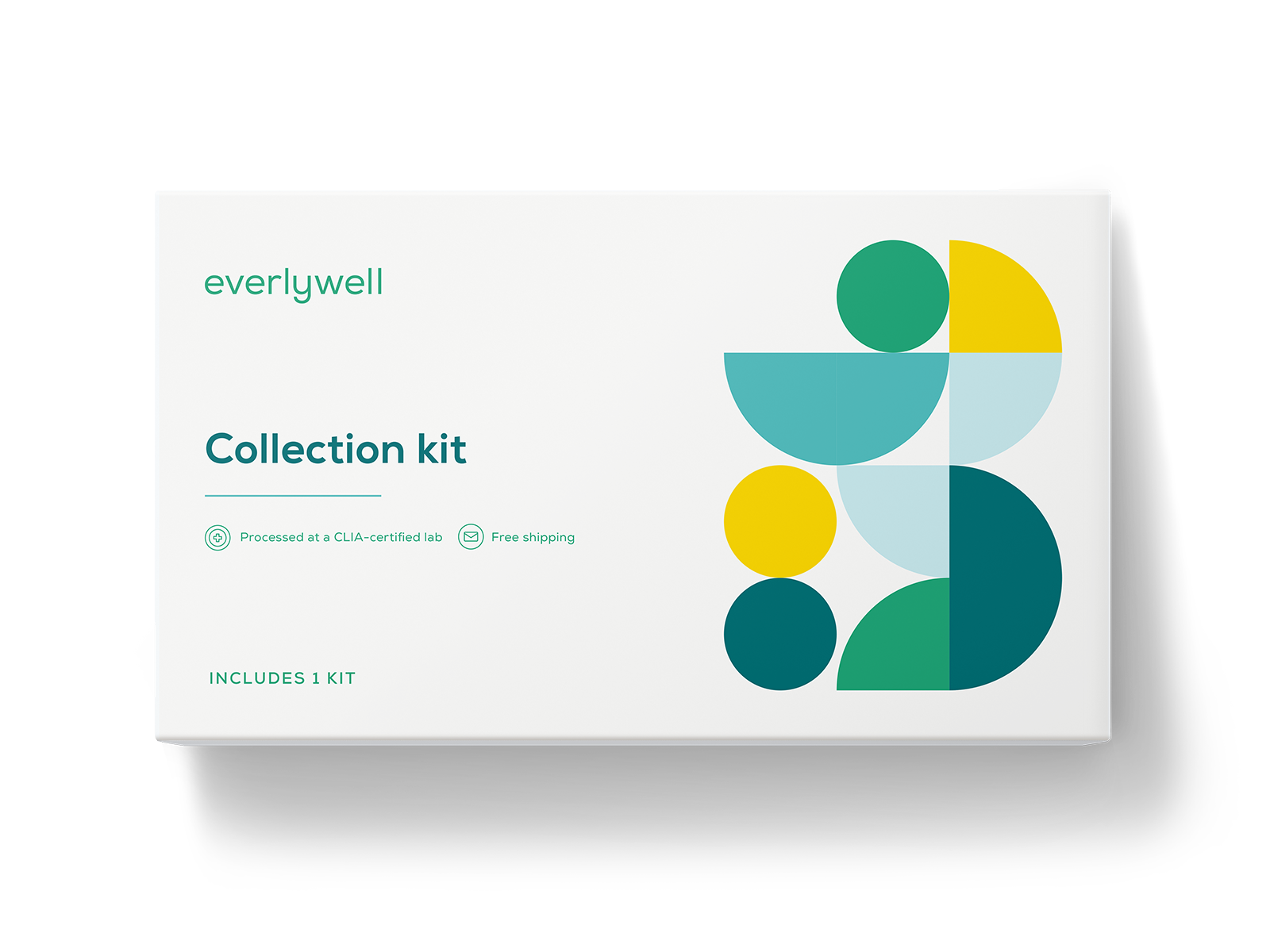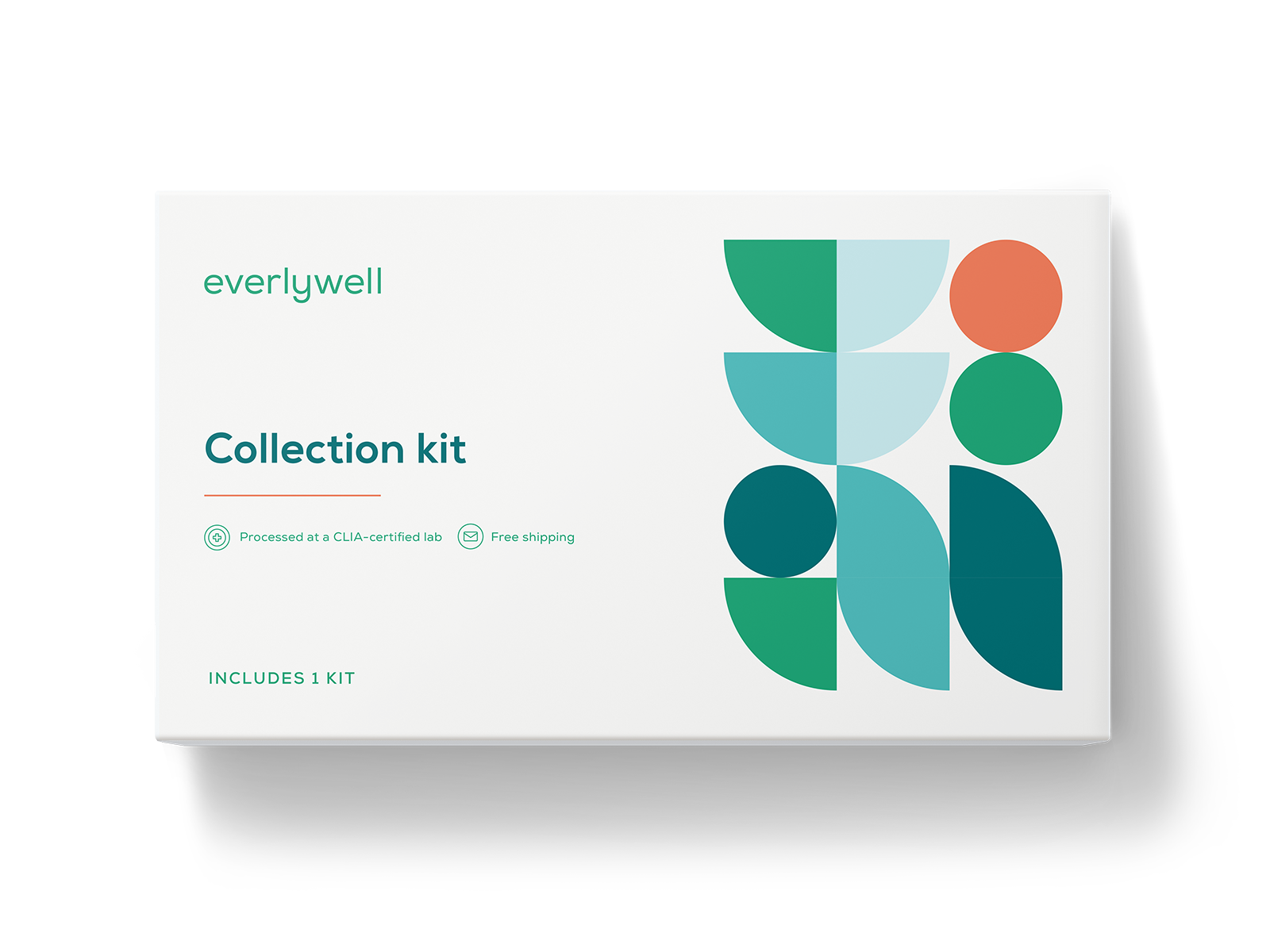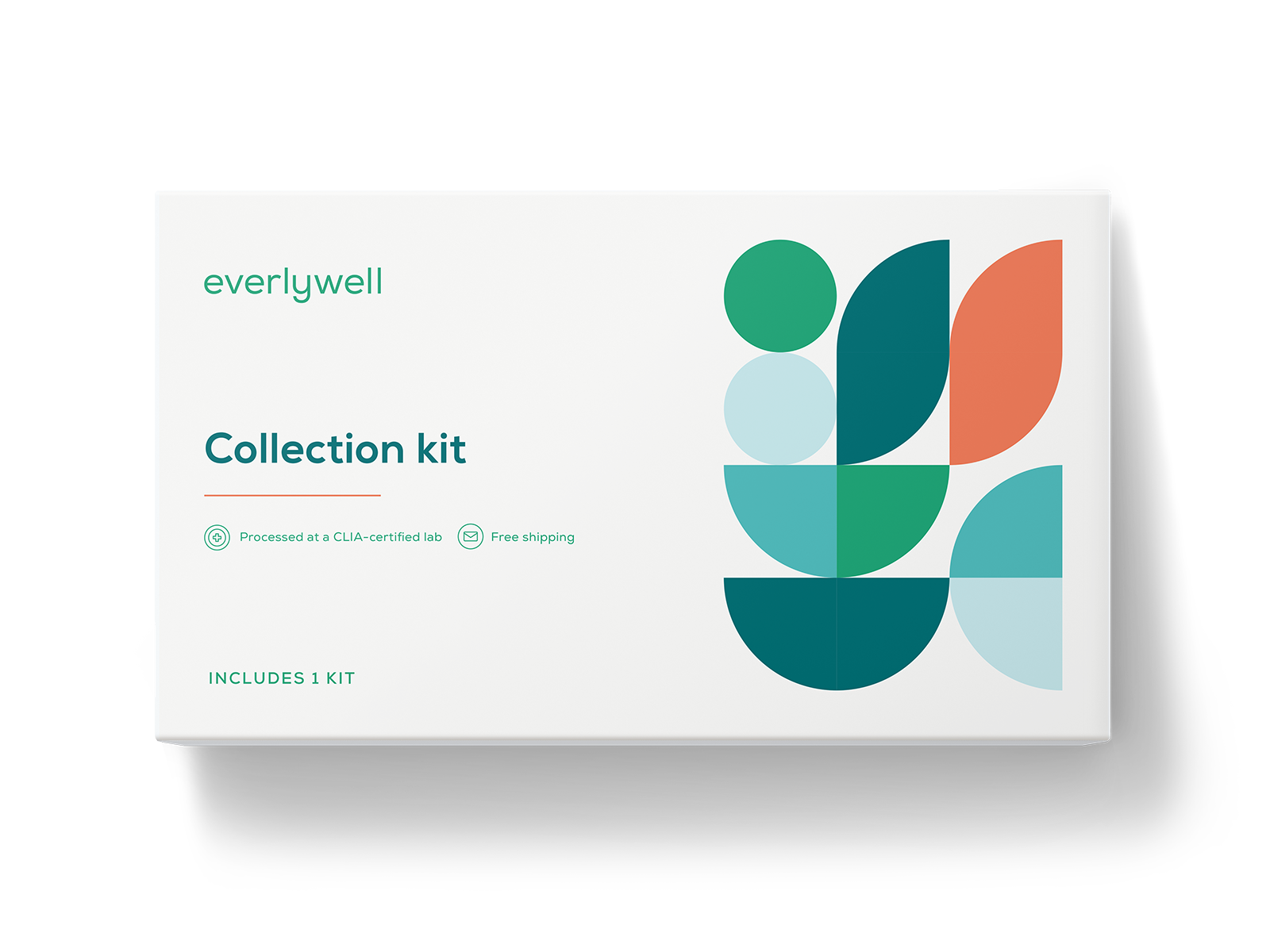Food Sensitivity Test
/each
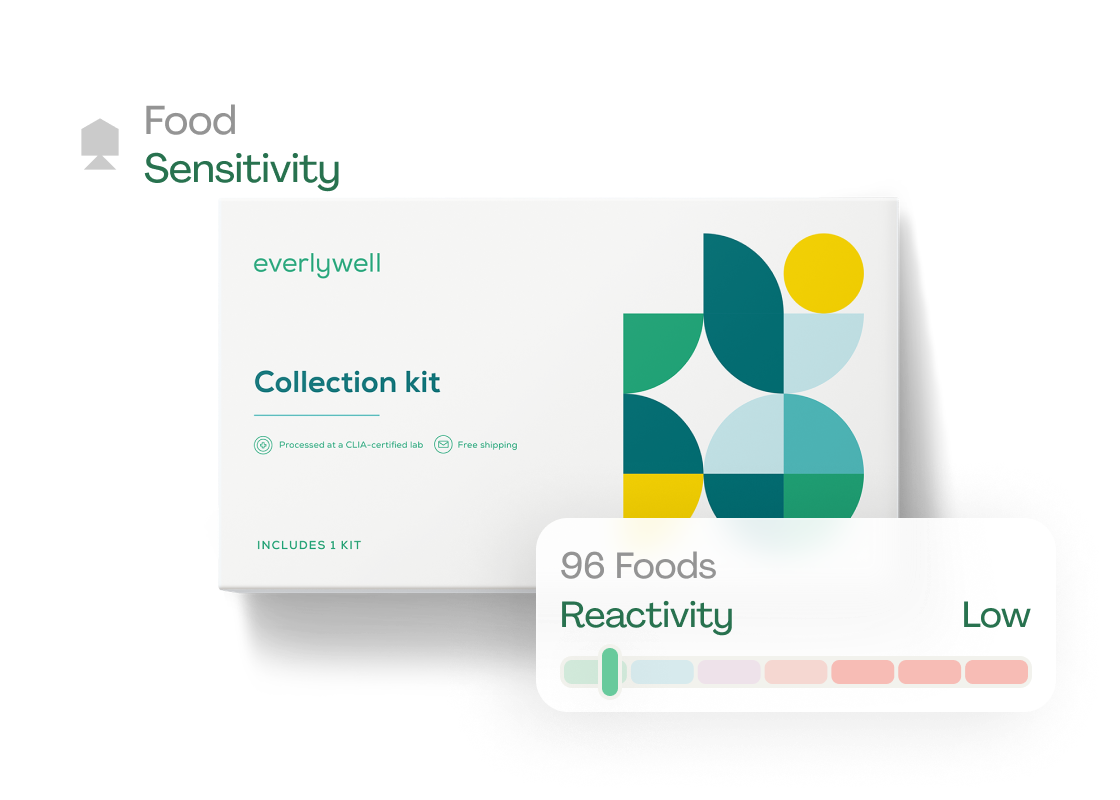





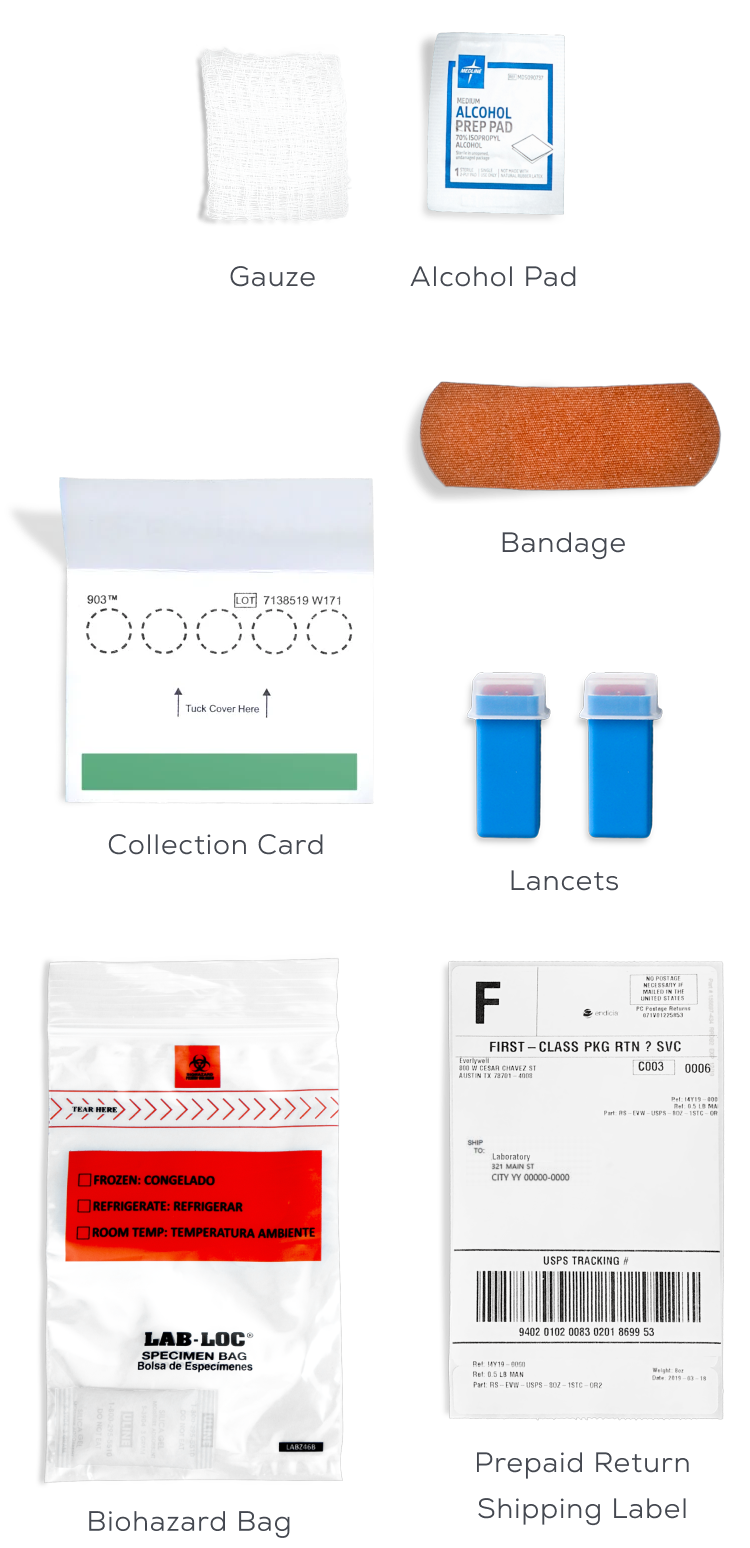



What foods are tested?
This at-home lab test measures your body’s immune response to 96 common foods to help guide your food selection in a two-part elimination diet.
- IgG reactivity to 96 foods
Finger prick sample
We measure your immune system's IgG antibody reactivity to 96 foods
Each food item below will be rated on a scale of Class 0 (normal reactivity) to Class 3 (high reactivity). A higher than normal IgG reactivity can mean there’s a possibility that that food item may be causing your symptoms—making it an ideal candidate for your two-part elimination diet.
This test is not a food allergy test, nor can it determine lactose intolerance or celiac disease.
Your body’s IgG antibody response to certain foods can cause the following symptoms:
Stomach
- Bloating
- Stomach or abdominal pain
- Indigestion
- Gastrointestinal distress
Head
- Headaches
Everything you need to understand your results
- Pre-paid shipping (both ways)
- All materials for sample collection and shipping back to the lab
- Detailed directions and an instructional video to guide you
- Help along the way from our customer care team
- Digital (and printable) results
- Watch a recorded educational session led by a healthcare professional

Food Sensitivity Test
Free shipping
FSA / HSA accepted
Learn More
Understand the differences between food sensitivity, food allergy, and celiac disease testing
- This test
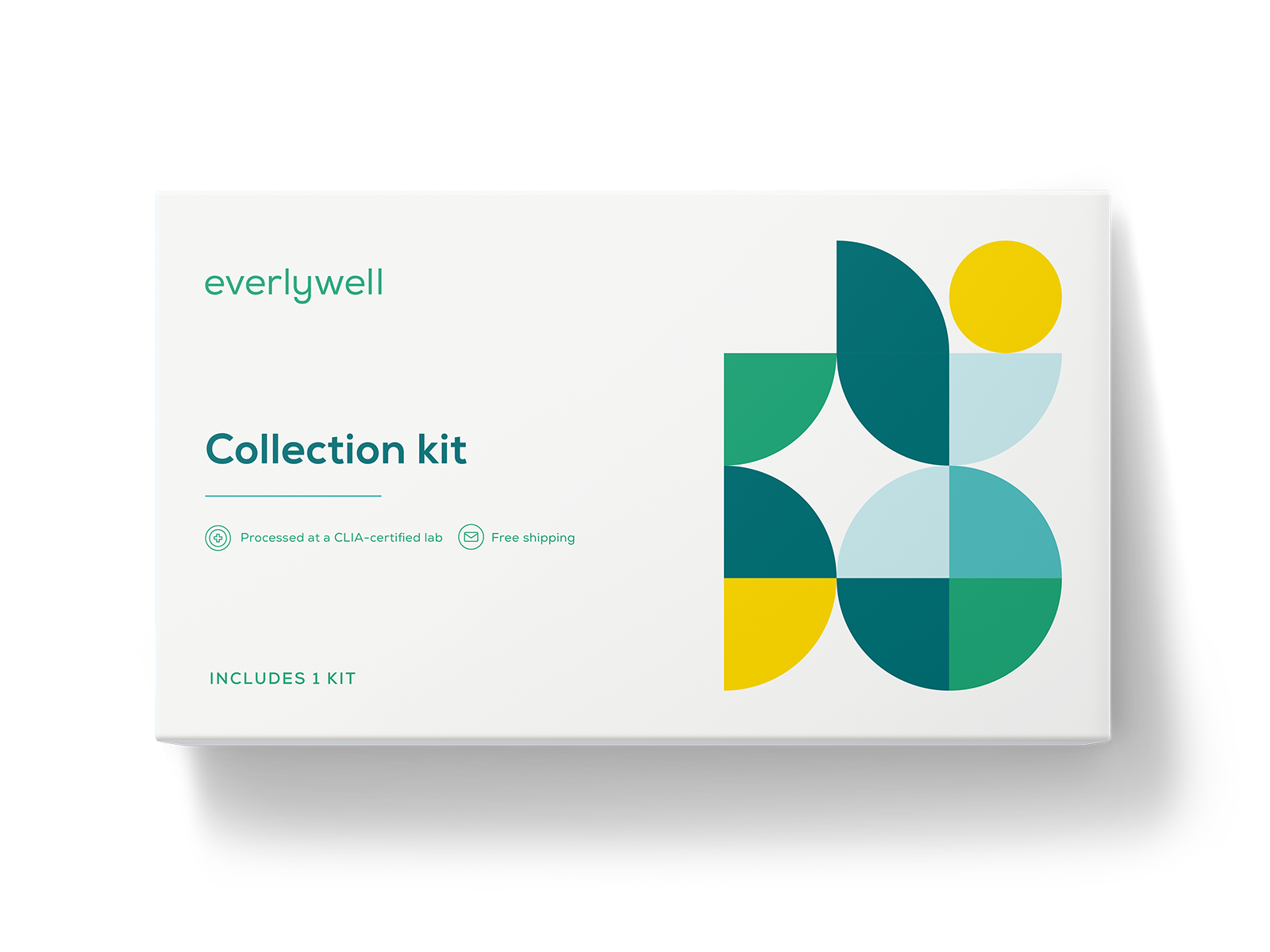
Food Sensitivity Test
4.7 · 6938 Reviews
Measures: Current levels of IgG antibodies for a variety of foods
Intended use: To identify foods in your current diet that might be connected to food sensitivity symptoms
Potential symptoms: Food sensitivities are a non-life-threatening condition with delayed symptoms such as abdominal pain, bloating, headache, or indigestion.
Next steps: Helps guide a two-part elimination diet
199 dollars and no cents$199.00 
Celiac Disease Screening Test
Measures: Presence or absence of antibodies that can indicate celiac disease
Intended use: To identify if you have an immune response to gluten, that might be connected to celiac disease
Potential symptoms: Celiac disease is an autoimmune condition with chronic symptoms such as abdominal pain, diarrhea, constipation, bloating, or unexpected weight loss
Next steps: Provides results to share with your healthcare provider
119 dollars and no cents$119.00
Better health starts here
How it all works
1
Register your test
Once your test arrives, head to everlywell.com or open your Everlywell app to register. Just Scan the QR code on the box to seamlessly plug in your test ID.


2
Test from the comfort of home
When you're ready, collect your sample and mail it in (following the directions in your kit) using the prepaid shipping label.


3
Get answers in days
Your physician-reviewed results will be ready in your account in a few days.
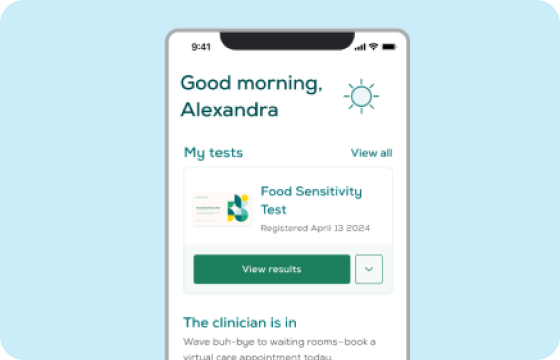

4
Healthy doesn’t happen alone
We'll offer lifestyle insights and guidance tailored to your results that you can use to make healthier choices.


1
Register your test
Once your test arrives, head to everlywell.com or open your Everlywell app to register. Just Scan the QR code on the box to seamlessly plug in your test ID.


2
Test from the comfort of home
When you're ready, collect your sample and mail it in (following the directions in your kit) using the prepaid shipping label.


3
Get answers in days
Your physician-reviewed results will be ready in your account in a few days.


4
Healthy doesn’t happen alone
We'll offer lifestyle insights and guidance tailored to your results that you can use to make healthier choices.



100% digital
Your results
Easy to access, even easier to understand
Gain meaningful insights about your health with easy-to-understand test results without the complex jargon.
You'll receive a complete breakdown of your report—including each marker tested and what your results mean for you.
Use your report to make an action plan with concrete next steps. And don't worry, we'll provide some additional resources and helpful tips along the way.
Care you can count on
Backed by science, reviewed by doctors

CLIA-certified laboratories
Each lab we work with is CLIA-certified (Clinical Laboratory Improvement Amendments). This means they must meet high standards to obtain both state and federal certifications and submit themselves to regular inspections.

Physician-reviewed results
All tests are reviewed by an independent board-certified physician within your state.

Your privacy matters
Everlywell is HIPAA-compliant. This means we never sell your health data and we always store it securely—in fact, we use state-of-the-art, bank-grade encryption.
Reviews
96%
Would recommend this test to a friend
4.7 out of 5
5 star
77%
4 star
17%
3 star
4%
2 star
1%
1 star
1%
Review Snapshot
by PowerReviews
Ratings Distribution
5 Stars
5371
4 Stars
1165
3 Stars
305
2 Stars
58
1 Star
41
Pros
- No Pros
Cons
- No Cons
Most Liked Positive Review
Interesting and informative
I have had eczema for years and in the last few years I have had several extremely bad flair ups that were only controlled by Prednisone . I have also had somewhat unexplained weight gain and general puffiness. I cannot find the triggers, nothing environmental, confirmed with patch testing, seems ...to be a trigger. I have always felt it was tied to food sensitivity and have been extremely careful with my diet. No grains or gluten whatsoever, limited diary, soy and sugar. The most frustrating thing to me is my skin will temporarily clear up for months at a time and randomly become inflamed and irritated. Weight continues to be a bit of a struggle so after the holidays and eating a particularly horrible diet I decided it was the perfect time to try the Food Sensitivity Test. Just for kicks and giggles I wanted to see if there were any additional items I could be sensitive to. It was fast and easy to use. Results came back yesterday (5 days after I mailed in sample, even with a holiday) and guess what, nothing I have eliminated from my diet for years showed any sensitivity - keep in mind I'd been off the wagon since Thanksgiving so I had plenty of exposure to those foods within the last 6 weeks. 5 of the items that came back as moderately sensitive were all "healthy" food items I have dramatically increased in my diet in the last 2 years to compensate for some of what I was not eating! As a matter of fact I had consumed two eggs fifteen minutes prior to opening the results to find both egg yoke and egg whites as my largest sensitivity. I have started my new 30 day elimination diet today so we'll see. I would highly recommend this to anyone. You may find out something you were not expecting!
Most Liked Negative Review
Just Indicates Sensitivity for Foods Most Recently Eaten?
I loved the design of the product, ease of use, and the speed with which I received the results! BUT, I was disappointed when I reviewed the results. The foods that ranked highest for sensitivity seem to just be the ones I had eaten most recently before taking the test. So, I have concerns about ...the accuracy of the test. Is this common? Are there retesting options?
Reviewed by 6940 customers
Great results and fast
Submitted 4 days ago
By Fayers
From Wyoming
Verified Buyer
Great results and fast
Merchant Response
Thanks so much for your kind words! We're so glad to hear you had a quick and positive testing experience. 💚
Yes
Submitted 7 days ago
By Aj
From Iowa
Verified Buyer
He's
Great product
Submitted 17 days ago
By Dee
From Suffolk,VA
Verified Buyer
Very informative
Merchant Response
Thank you for your review, Dee! We're happy to hear that you've enjoyed the convenience of at-home testing with Everlywell.
-
Submitted 18 days ago
By -
From -
Verified Buyer
-
Merchant Response
Thank you for your feedback! Please feel free to reference our support site or contact our Customer Experience Team with any questions you may have.
Love!!
Submitted 5 months ago
By Ash
From Lexington, kY
Verified Buyer
Great product and easy to use
Merchant Response
Thank you for your review, Ash! We're happy to hear that you've enjoyed the convenience of at-home testing with Everlywell. 💚
Great
Submitted 6 months ago
By 1234
From Ms
Verified Buyer
Easy to follow directions
Merchant Response
Thank you for your review, 1234! We're happy to hear that you've enjoyed the convenience of at-home testing with Everlywell. 💚
Not worth the money
Submitted 8 months ago
By SLW
From Madison, WI
Verified Buyer
The test was not helpful because I had already removed the food items I suspected were causing issues. As a result, these foods did not appear on my sensitivity panel, making the test pointless. There should be a clear warning before purchasing the test.
Merchant Response
Thank you for your feedback! To clarify, it is not necessary to adjust your diet prior to your test. That said, IgG reactivity breaks down over time. So, if you have avoided a specific food for a while, it may show up as a lower reactivity in your results. If you have any further questions, please email us at contact@everlywell.com. We want to do everything we can to help you get the most value possible out of this test. 💚
I would but this product again
Submitted 8 months ago
By Ash
From Cincinnati
Verified Buyer
So easy to use
Merchant Response
Thank you for your review, Ash! We're happy to hear that you've enjoyed the convenience of at-home testing with Everlywell. 💚
Great
Submitted 8 months ago
By J
From A
Verified Buyer
Helped with inflammation
Merchant Response
Thank you for taking the time to leave us a review, J! We're so happy to hear that you've gained helpful insight from your test results. 💚
Love everlywell
Submitted 9 months ago
By Tess
From Houstoh
Verified Buyer
Want to take more test - knowledge for our health is essential
Merchant Response
Thank you for your review, Tess! We're so happy to hear of your positive experience, and appreciate you choosing Everlywell for your at-home testing needs. 💚
Related tests
Customers also bought
FAQs
You have questions, we have answers
Do you ever feel like you may have certain symptoms related to foods, such as headaches, stomach pain, or diarrhea? Do you feel you may want to try eliminating possible triggers, Do you ever feel like you may have certain symptoms related to foods, such as headaches, stomach pain, or diarrhea? Do you feel you may want to try eliminating possible triggers, but you are not sure where to start?
Our Food Sensitivity Test measures your body’s IgG immune response to 96 common foods.
A temporary elimination diet is a way to help you pinpoint foods that may be causing your symptoms. This test is not the same as an intolerance or food allergy test. Food allergies are mediated by IgE antibodies, and symptoms for food allergies typically occur within minutes to hours of exposure. These symptoms are often severe and potentially life-threatening. Food sensitivities, on the other hand, are often marked by a low and slow onset, and involve an entirely different antibody—IgG. In addition, this test does not test for lactose intolerance, IBS, or celiac disease.
Your body may have an immune response to foods you eat, which may manifest as physical symptoms. Some of our customers take the Food Sensitivity Test because they experience symptoms like:
Bloating
Headaches
Indigestion
Gastrointestinal (GI) distress
Stomach or abdominal pain
If you are looking to add a potentially ‘problematic’ food back into your diet to see if you’re still reactive to it on your test results, it’s recommended to consume that food for about 4-6 weeks prior to testing.
The results of your Everlywell Food Sensitivity Test are intended to be used to guide a temporary elimination diet with an add-back challenge. This is a critical step in helping pinpoint which foods may be causing your unwanted symptoms.
We understand that food elimination and restriction can lead to or trigger disordered eating behavior. For this reason, it is not recommended to take the Food Sensitivity Test if you currently have or are in recovery for an eating disorder (i.e., anorexia nervosa, bulimia nervosa, and binge eating disorder).
It is also not recommended to use the results of your Food Sensitivity Test to achieve weight loss. Eating a balanced diet is important and your results are not intended to strictly limit your consumption and inhibit your ability to obtain necessary calories and nutrients from food.
Due to the specific nutritional needs of pregnant and breastfeeding women, elimination diets are not recommended. It’s best to speak with your healthcare provider for advice if you are experiencing unwanted symptoms.
Everlywell currently does not offer tests to anyone below the age of 18. This is noted in the everlywell.com cart page, our terms of use, the FAQ section, and our physical kits. Additionally, we restrict registration for anyone below the age of 18.
If a test was purchased on everlywell.com and your order hasn’t shipped, we can offer a full refund upon request. Our full returns policy can be found here.
For any other questions regarding this policy, please feel free to contact our Customer Care Team.
All of the laboratories with whom we partner are considered industry leaders in their respective areas, with extensive histories and CLIA certification. All of them perform frequent internal quality controls and testing, as well as regular third-party testing for independent validation of the accuracy of their testing. Consistently, such validation shows a high degree (>95-99%) results correlation.
IgG antibody reactivity is based on exposure to the food or foods; therefore, individuals who have since eliminated “problematic” foods (those which they suspect may have caused symptoms) from their diet may see a lower reactivity than expected.
Your food sensitivity results will tell you your levels of IgG antibody reactivity to 96 common foods.
Each food will be rated on a Class scale of 0-3: Class 0 (normal reactivity) to Class 3 (high reactivity). This is a great place to start if you want to dig into your body's relationship with food.
You will also get:
Tailored suggestions about what to do next
Help prioritizing your temporary elimination diet
Personalized information and education
Everlywell will provide suggestions about what to do next. While reactivity does not always equate with symptoms, it can help prioritize the foods selected for a temporary elimination diet. Once you have your IgG test results, you can try a two-part elimination diet to help you pinpoint which foods may be causing you symptoms. This can allow you to achieve the right balance of minimizing your symptoms while maintaining a lifestyle that you enjoy.
Our tests provide personalized information and education; they are not intended to diagnose any disease or condition, or to substitute for professional medical advice or treatment. You should always seek the advice of your physician or other qualified healthcare provider with any questions you have regarding your medical care.
This test is a great place to start if you suspect that one (or more!) of the foods currently in your diet may be causing you discomfort. Enjoy food sensitivity testing the way it should be; quick, easy, and from the convenience of your home.
Your body can react to a “troublesome” food in several different ways, and how your body reacts to that food depends on whether you may have a food sensitivity, food intolerance, or food allergy. It’s not uncommon for confusion to exist around the fact that allergies, intolerances, and sensitivities aren’t interchangeable. Here, we’ll explore each of these types of adverse reactions to food – starting with food sensitivity.
Food Sensitivity
A food sensitivity may result from a type of immune system response that’s very different from a food allergy. While not entirely understood, research has shown that people may identify symptom-causing foods using the results of IgG testing along with an elimination diet. IgG antibody reactions against those foods may be normal in some people, but in others, it may cause symptoms because of the inflammation the immune reaction produces from those interactions. Food sensitivity symptoms reported by our customers include headaches, bloating, stomach pain, indigestion – and more.
What’s really interesting about food sensitivities is that symptoms usually don’t appear as soon as you eat the problem food. Instead, you might have symptoms hours or days after eating that food – which can make it hard to connect specific foods to the symptoms you’re experiencing.
Fortunately, with an elimination diet and Everlywell’s Food Sensitivity Test, you can discover what foods you may be sensitive to.
Learn more:
Food Allergy vs. Food Sensitivity
Food Allergy
When you eat a food you’re allergic to, your immune system responds by activating the IgE antibodies in your blood. Those antibody-food interactions result in the production of a chemical called histamine. Histamine is a type of substance your immune system makes. When immune cells release histamine in your body, you might experience any number of allergy symptoms. (That’s why many over-the-counter allergy medications are known as “antihistamines” – they counteract the allergic effects of histamine.) With food allergies, symptoms usually appear almost as soon as you’ve eaten the trigger food.
An example of a food allergy is an allergy to tree nuts, one of the most common causes of food-related allergic reactions in the world. (Hazelnuts, walnuts, and macadamia nuts are all examples of tree nuts.)
If you’re allergic to a certain food, you can experience a potentially life-threatening allergic reaction whenever you eat that food. That’s because anaphylaxis can occur within minutes of consuming food allergens. Anaphylaxis can result in death because of a dramatic drop in blood pressure – or because of swelling around the person’s airways, which cuts off the body’s supply of air.
Food Intolerance
A food intolerance can occur if, for example, you don’t have enough of the right enzymes your body needs to break down a particular food. (Enzymes are special proteins in the body that dramatically speed up chemical reactions.)
An example of a food intolerance is lactose intolerance. Lactose is a type of sugar commonly found in cow’s milk. If you’re lactose intolerant, your body doesn’t produce enough lactase – the enzyme that breaks down lactose. So it’s hard for your body to digest lactose effectively, resulting in unpleasant symptoms when you drink a glass of milk or eat dairy products. Food intolerance symptoms commonly include nausea, bloating, and diarrhea.
Unlike food allergies, food intolerances don’t involve an immune system response - they all take place inside the gut before digestion occurs.
If you have a sensitivity to a particular food, you might experience one or more adverse reactions several hours or days after eating that food. Some reported symptoms from our customers include:
Headaches
Bloating
Stomach or abdominal pain
Indigestion
Gastrointestinal distress
Related test for bloating symptom: Thyroid Test
An elimination diet can be a useful tool for uncovering the specific foods you’re sensitive to.
Basically, in an elimination diet, you temporarily remove foods from your diet that you suspect could be giving you symptoms. In other words, you stop eating those “suspect foods” for a given amount of time – often between 4-6 weeks.
Next, you add those foods back to your diet – one at a time. Each time you add a “suspect food” back to your diet, you watch for symptoms for about 2-3 days. If a food you’re adding back doesn’t result in symptoms, then you continue eating it as a normal part of your diet. But if a food does give you symptoms when you add it back to your diet, then you’ve likely found a food you’re sensitive to.
That’s why food sensitivity testing can make a real difference if you want to discover the foods you’re sensitive to. A food sensitivity test checks the reactivity levels of your IgG antibodies for many different foods. (IgG antibodies are another type of antibody that your immune system produces.)
If you have a high IgG reactivity level to a certain food, there’s a possibility that food may be involved with causing your food sensitivity symptoms.
So taking a food sensitivity test can give you a list of “suspect foods” that’s based on your body’s immune system response. You can then use this information to guide your elimination diet – and to choose what foods to eliminate at first. This helps remove a lot of the “guessing” in the elimination diet process – and can make it easier for you to pinpoint the foods behind your symptoms.
Learn more:
How To Use A Food Elimination Diet To Discover Your Food Sensitivities
A food sensitivity blood test measures your IgG reactivity levels for different kinds of food, using a small sample of blood. High IgG reactivity for a certain food indicates there’s a possibility that food may be involved with causing your symptoms.
Knowing your IgG reactivity levels for various foods can help you create a list of “suspect foods” to initially remove in an elimination diet – making it an easier, quicker process to pinpoint what's causing your symptoms of food sensitivity.
An IgG food sensitivity test uses a small sample of blood to check how your IgG antibodies react to different kinds of food. A higher IgG reactivity level for a certain food can mean that there’s a possibility that food can be giving you symptoms – making that food an ideal candidate to include in your list of “suspect foods” you initially remove in an elimination diet.
An IgG blood test for food sensitivity reveals your IgG reactivity levels for different foods. A higher level of IgG reactivity for a given food suggests that it may be causing your symptoms.
However, higher IgG reactivity levels don’t always correlate with symptom-causing foods – which is why it’s so important to use an elimination diet (guided by your IgG test results) to accurately pinpoint your specific food sensitivities.
Fast telehealth visits
Our expert team of clinicians will help you start your journey to better health
Schedule visit